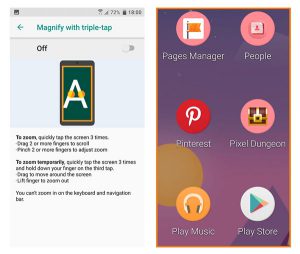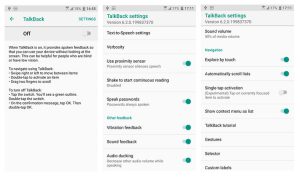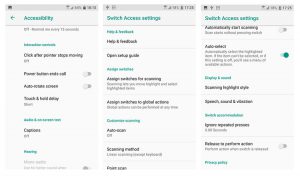 The operating system Android, regardless of which manufacturer device you are using: Samsung, Google Pixel or Huawei, has a number of special settings that should make it easier to use the gadget for those who have problems with hearing or vision. Those who have some difficulties using a smartphone due to the peculiarities of physical development, using these settings will be able to use Android – the smartphone to its fullest. We will take a look at 5 hidden operating system settings that every user should know about.
The operating system Android, regardless of which manufacturer device you are using: Samsung, Google Pixel or Huawei, has a number of special settings that should make it easier to use the gadget for those who have problems with hearing or vision. Those who have some difficulties using a smartphone due to the peculiarities of physical development, using these settings will be able to use Android – the smartphone to its fullest. We will take a look at 5 hidden operating system settings that every user should know about.
There are many different accessibility options. Depending on your device and OS version, these functions can be very different. However, there are several special settings typical for most devices. features: TalkBack, change font size, work with titles and touch delay. However, there are many more of these settings. For example, many users use flash as a notification indicator. So we advise you to delve into the settings of your device, maybe you will find something useful for yourself. And now let's go directly to the article itself.
Zoom gestures
When this feature is enabled, you can scale images by tapping on the screen. To enlarge the image, make a triple tap anywhere on the screen. Press the screen three times to cancel. If you tap the screen three times and hold your finger on the last touch, the magnification will occur gradually. Release your finger and the screen will return. This is a very useful feature even for people with good vision, not to mention those who have significant visual impairments.

With gestures, you can magnify the image with a triple tap, at least for a while.
to the content
Text-to-speech translation
Sound when pressed is perhaps the most famous of all specials. possibilities – you may even have already used it. All you need to do is activate the function in the settings and download the language pack for the language you need.
We recommend using “Sound on Press” for one simple reason: you can listen to an article or book that was postponed a week ago when you are busy with something and you simply do not have enough time to read it on your own. It is enough to press one button and the system will read any text to you. They say the truth: “Laziness is the engine of progress!” But effective, so you will listen to the material you need, and finish all your business.

You can use text-to-speech translation to read out long-held articles or books.
to the content
Color adjustment: negative, saturation, inversion
Do you miss the days when most Android devices had black backgrounds? Probably, the current gray-white background strongly “presses” on your eyes even at the minimum screen brightness at night. Did you recognize yourself? Then we have a solution for you. In the menu “Special. possibilities ”, move the slider“ Color inversion ”(in some devices this item can be labeled as“ Negative Colors ”). Please, now you have a good old dark background.
Many Android smartphones have such a function as color correction for people with color blindness. High contrast text is another extremely useful feature, even if you don't have vision problems.
to the content
Voice Action: TalkBack and Explore by Touch
This is a cool feature, especially if you have very poor eyesight or just forgot your glasses at home. It can help even if your screen is cracked, which causes problems with the touch. As soon as you activate this function, any of your actions on the smartphone will be voiced.
Explore by Touch does exactly the same thing, only the name is different. There are quite a few settings for TalkBack, so take the time and explore them. It's worth it.

On some devices, you may come across Select to speak, a simplified version of TalkBack. When enabled, a round icon appears in the lower right corner of the screen. By clicking on it and the play button, you start reading the text on the screen.
to the content
Interaction control
To access this package of settings, you must go to the “Accessibility” menu. By doing this, you can activate options such as gesture controls, tap and hold delay, and others. But the most interesting thing is that on some Android gadgets, you can select those parts of the screen that will not respond to touch, for example, the status bar, notification bar, etc.

Example settings HTC
Go to the accessibility section on your device to see if you have the settings that were described in this article. It should be noted that on different devices, the names of the settings may differ. For example, on company smartphones LG, “Interaction Control” may be called “Touch Control Areas” or “Interaction Control”. And on HTC, it's “Switch Access”.
We have not reviewed all the specials. the capabilities of the Android operating system, since there are very, very many of them, so we have chosen the most useful ones both for an ordinary user and for people with various problems. In any case, we hope that the features we've described are useful to you. Even if you don't plan on using them, they are worth knowing about.
And what specials. are you using opportunities? Which do you think is the best?
